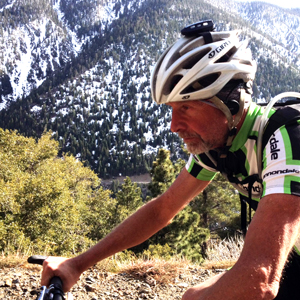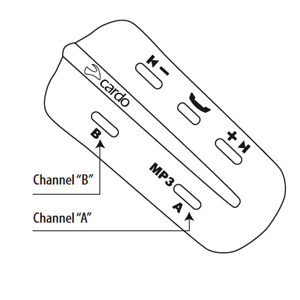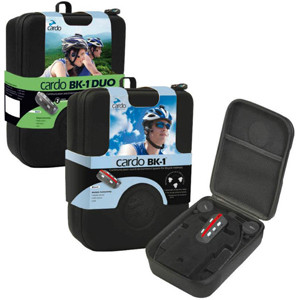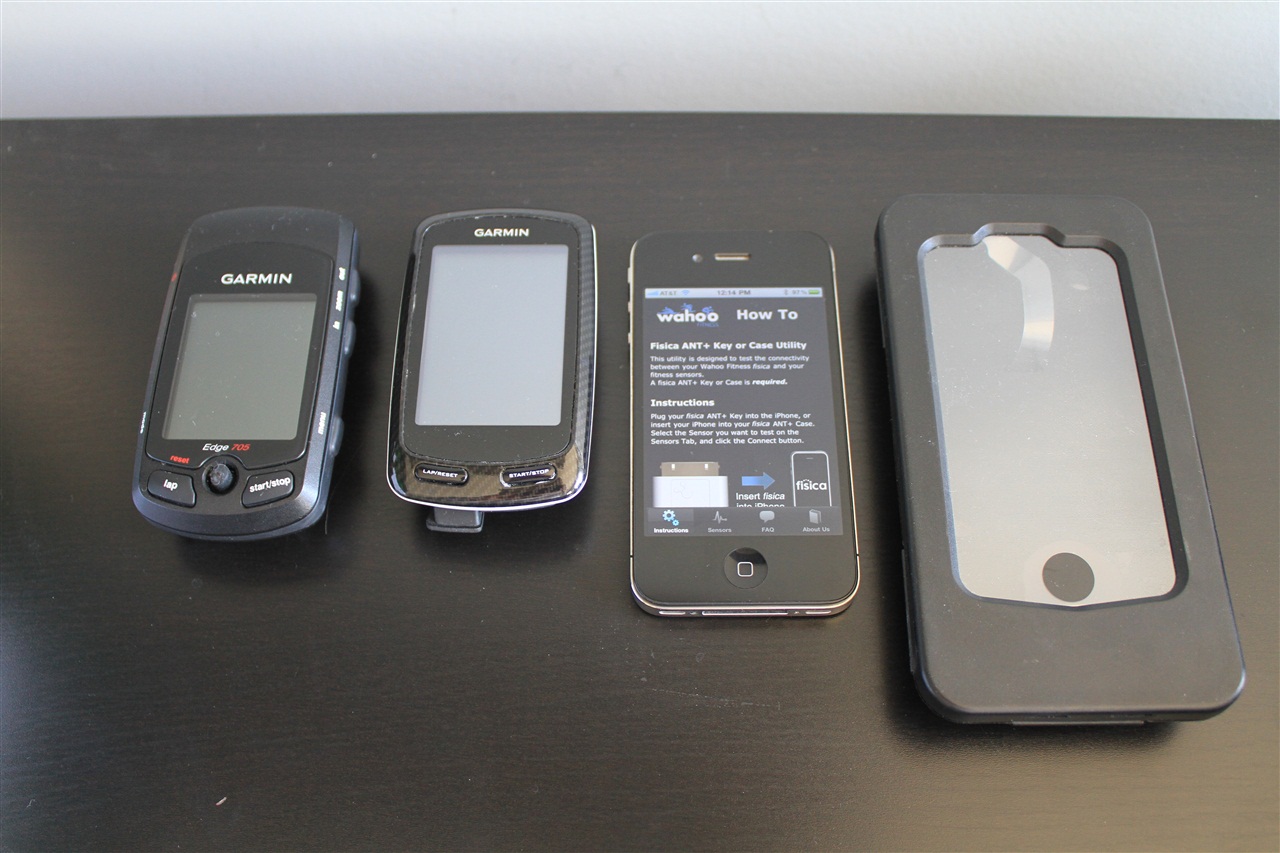Take Your Office Out For a Spin

A lot of bike executives I know don't bike; they run instead. Bicycling—they tell me—takes too long. I sympathize. In my own case, I still ride, just, not very far. I'd like to go on 2-hour rides, but I can't take that much time away from my office.
Well, that's changing for me. My home office just got a few square miles bigger.
Motorcycle touring and café racing enthusiasts have known for some time about Cardo Systems. These are the bluetooth enabled intercoms worn by the motorcycling groups you see on some of your favorite cycling routes. Riders love Cardo Systems Scala headsets because: 1) The noise canceling technology allows riders—up to a mile away from each other (don't ask me how a bluetooth signal can extend that long, I don't know)—to talk to and understand each other clearly; and riders can stream music from a bluetooth enabled device through the headset.
Cyclists can now do the same thing, via Cardo Systems BK-1 headset—though, the range for this product is more like a quarter mile. The streaming music thing is an iffy idea, safety-wise, for road bicyclists, though it's fine for mountain biking and just this morning I listened—via this helmet-attached device—to a vintage Cat Stevens playlist on my iPhone during a 90-minute ride in the trees.
As far as talking to another BK-1-equipped cyclist, yes, that works. I went on a bike ride with fellow Slowtwitcher and pro bike racer Paul Thomas, and the system is everything promised: clear, no-wind-noise communication via a signal that seems only interrupted when a mountain sits in between the riders.
However, that's not the sexy feature. Not to me. I figured, heck, if I can stream music from my iPod to the Cardo BK-1, I can stream a telephone call as well.
So, I paired the BK-1 to my iPhone 4, which was the simplest bluetooth pairing I've done to date, and I enabled Siri. I took my bike, and the Cardo BK-1 out for a spin, with my iPhone in my jersey pocket.

For this application, the Cardo Systems send/receive unit is not unlike the bluetooth earpiece I typically see in the Starbucks line, or worn by shoppers gabbing (seemingly to themselves) in the supermarket. But the brain and battery of the BK-1 sits on top of the helmet, and you listen via a pair of unobtrusive "speakers" adjacent to your ears. The noise canceling microphone is small and to side of one's mouth—nothing that interferes with breathing, drinking from a bottle, or eating.
There are two buttons on the right side of the unit—these enable you to change frequencies—and three buttons on the left. Once everything is set up—and setting up is quick and intuitive—the button you use the most is the middle button on the left hand side. The other two buttons are up and down volume, and these double as iPod => next song or last song. I don't find they are much often after initial set up.
All these buttons perform double duty as lights, and blinking red or blue lights aid you during set up or while turning the unit on and off.
In order to make a call, you reach up and depress one of those buttons mentioned above. It's the "mobile" button and sits in between the volume up and down buttons. It's easy to find while you're riding.
That button depressed, Siri asks me what I'd like to do, her voice lound and clear into my ears via the Cardo BK-1 headset. Should I want to make a call, I'll instruct Siri to call someone in my list of contacts, and Siri makes the call.
Answering the phone is pretty much the same. When a call is incoming, my iPhone's ringtone plays over the headset alerting me, even if I'm busy to listening to my iPod during my MTB ride. I reach up, hit the mobile button, and answer the phone.
Because my office phone is programmed to forward direct to my cell after 4 rings (or immediately if I decide to enable call forwarding), I can go on a ride and know that a call to either or any number will forward to my cell, and I can speak to the caller with noise canceling software eliminating any difficulty hearing.
Because Siri is also able to receive, alert, and read incoming text messages to you, there is no reason to miss these either, and it's all done hands-free. Likewise, you can compose and send a text without ever removing your hands from the handlebars (except once, to hit the BK-1's mobile phone button). I don't know if all this getting and sending texts is the greatest idea, both for safety, and assuming you want to enjoy your bike ride, but, whatever it is you can do with Siri, you can do it while riding.

As far as I know, Siri is not yet able to read incoming emails. However, that is probably a matter of time, and I believe that Android users do have that capacity if the Vlingo Virtual Assistant (freeware) app has been downloaded and deployed. Indeed, it seems that Vlingo does most of what I might want Siri to do, plus read incoming email.
Siri's inability to read incoming emails can be overcome via available tweaks and assistants—some of which require a jailbreak—but this gets beyond what I want to write about today. What's important to me, now, is my own personal jailbreak out of the physical confines of my office, and onto my bike, for rides the length of which are determined by my legs and lungs, rather than by my guilt.
Simply put, thank God Almighty, with an assist from Apple and Cardo Systems, I'm free at last. Well, not free, but, freer. Just to reiterate: What makes this different from the status quo ante, for me, is the noise canceling mic; the hands-free nature of the system; and the ability to hear clearly in both ears; and to speak clearly to my intended listener. Because the noise cancelation works so well, the party to whom you're talking won't know you're riding a bike. This being the case, your caller will likely assume you're in front of your computer, and might then wonder why you're breathing hard.
You can buy a Cardo Systems "Duo" system—that is, two units—for $480. You can buy a single unit for $275.
Now, my wife likes the idea of two-way radios and intercoms. If it was up to her, we'd have radio communication all over the property, during runs, rides and whatnot. Me—less so. Therefore, the wife likes the idea of the Duo, I'm more impressed with the features available to me in the single unit system.
The Cardo BK-1 system comes with an ample assortment of attachment helps for your helmet, and it charges like your GPS sport watch or head unit: a mini-USB that plugs into the unit, and a regular USB on the other end of the cord. There is a USB-to-wall charge adapter also included, for quicker charging. The mini-to-standard USB allows the unit to receive firmware updates.
Next for my home office on wheels is the appropriate iPhone case and bike mount, so that when Siri apprises me of an incoming call, I can see who is behind it. I might also choose to minimize electronic clutter on the front of my bike by having my Quarq readout appear on the iPhone. Consequently, I should be writing fairly quickly about Lifeproof, and how this expands my mobile office suite of services.


